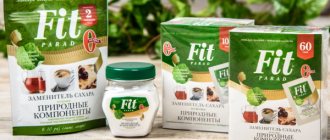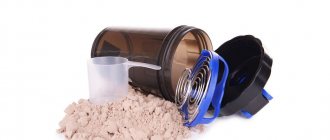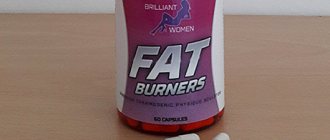If you put sports nutrition products on a pedestal, then creatine will be among the most popular, namely among BCAA and essential amino acids, proteins and gainers. Why is creatine, or carboxylic acid, so popular and how does it affect the body?
What is creatine and how does it affect the body?
Creatine is a carboxylic acid that contains nitrogen. This chemical compound was discovered back in the nineteenth century! But then it was found in muscle tissue as an integral component of skeletal muscles, but this substance became a sports supplement not so long ago.
Creatine appeared as an anabolic agent in the 90s of the last century. Then scientists were able to prove that daily intake of the product creatine monohydrate contributed to an increase in creatine in muscles by almost a quarter in just five days. And, as you know, creatine is involved in energy metabolic processes, and it also has a positive effect on muscle contractility.
The human body constantly contains a supply of creatine, which is quite sufficient for life; this amount is approximately 150 grams. But for a person experiencing high physical activity, this amount is not enough and it is quickly consumed, which leads to overwork and degradation of the anabolic process. In other words, the muscles become exhausted and cannot work and develop effectively. It is in order to maintain a high level of the substance in the muscles that a creatine sports supplement is used.
What are the features of life with chronic renal failure and what to do?
In case of chronic kidney failure, the kidneys cease to perform their normal function—excretion of waste products in the urine. As a result, they accumulate in the human body. First of all, these are urea and creatinine. It is by the level of the latter that kidney function is assessed. High creatinine is a disorder of kidney function. Therefore, with chronic renal failure, it is important to undergo regular tests to check the level of this breakdown product. To prevent it from increasing, you must follow a number of rules.
Avoid strenuous physical activity
It increases creatinine levels. This is due to the fact that this substance is the end product of the creatine-phosphate reaction in muscles during their energy metabolism, work and the occurrence of injuries. Hence, high physical activity results in a high level of creatinine, which the already dysfunctional kidneys cannot cope with.
Limit protein foods
In case of chronic renal failure, protein is limited in the diet: with SFC below 50 ml/min - up to 30-40 g/day, below 20 ml/min - up to 20-24 g/day. This is necessary to reduce the load on the kidneys. At the same time, with the start of dialysis, the amount of protein is increased to 1.1-1.5 g/kg/day. This is because during the dialysis process many important components are washed out, and protein no longer affects the condition of the kidneys so much.
Eat enough carbohydrates and fats
Instead of protein, the diet should contain a sufficient amount of carbohydrates and fats. The basis of the diet is complex carbohydrates, which do not increase glucose and are slowly absorbed, and unsaturated fats, which are beneficial for the heart and blood vessels.
Maintain your caloric intake
Calorie content is important in a diet for chronic renal failure. It should be high - about 3000 kcal to replenish all vitamins and minerals. The diet is prescribed individually, so 3000 kcal is an approximate number. An example of a menu tailored to the requirements is given below.
Control the intake of microelements and water
Since the kidneys do not work well, they do not remove potassium, and its excess interferes with the functioning of the heart. Therefore, the amount of potassium consumed from food must be controlled. It is found in potatoes and other vegetables. To reduce the amount of potassium, these vegetables need to be cut and soaked for 6-10 hours before cooking, and the water should be changed as often as possible.
It is also necessary to limit the intake of phosphorus. In chronic renal failure, it can lead to damage to the bones and heart. Phosphorus is found in protein foods. Vegetables also contain them, but phosphorus is less absorbed from them. Also, its amount decreases when food is cooked. When choosing products, you should pay attention to those that have a low phosphorus-protein index - below 20 mg/g. Examples of food products for renal failure with this index are given in the table.
Another important rule of nutrition for chronic renal failure is to monitor your drinking regime. With severe swelling, you have to reduce the amount of water you drink. In this case, you need to weigh yourself at the same time every day, after emptying your bladder and bowels. If your weight increases sharply, it means fluid retention has occurred. If the amount of water is limited, you can suck on a piece of ice, and rinsing, chewing gum, lollipops or a slice of lemon will help with dry mouth.
Control blood pressure
Blood pressure needs to be controlled, it should be no higher than 130/80, maximum values are 140/90. To do this, on a diet for chronic renal failure, the amount of salt per day is limited to 2-3 g per day. If severe hypertension develops, it is necessary to switch to a salt-free diet.
To reduce the amount of salt per day, you can follow these tips:
- remove the salt shaker from the table;
- do not salt food during cooking (salt the finished portion);
- avoid foods rich in sodium (the so-called hidden salt, where its taste is not felt, but it is there);
- carefully read food labels, paying attention to sodium salts;
- in cafes and restaurants, choose dietary dishes (they contain less salt);
- Instead of salt, use seasonings like cinnamon, turmeric, garlic, onion, bay leaf, cardamom.
What foods contain creatine?
Creatine is found in a variety of foods. It is present in large quantities in fish and red meat (beef), as well as in pork. A small amount is found in fresh vegetables and fruits. The disadvantage of obtaining creatine in full from food is its sensitivity to high temperatures. That is, after baking the salmon in the oven, you can forget about creatine, and the same with pork. Of course, not the entire amount will be destroyed, but it’s not worth talking about the norm. For example, to replenish the daily dose of a substance, an athlete weighing 70 kg needs to consume one kilogram of beef.
Creatine in bodybuilding for mass growth
Creatine may seem to promote "artificial" weight gain at the expense of water, but cells that are more hydrated are more anabolic. Creatine also increases the activity of muscle satellite cells, helping to increase the overall capacity for long-term muscle growth.
The most effective of all forms of creatine is monohydrate. Creatine monohydrate is the common and most studied form of creatine. It has repeatedly proven its value in many studies. Some bodybuilders compare its effectiveness for mass growth with the effects of steroids on human muscles.
Another scientific fact about creatine is its ability to further enhance the production of anabolic hormones, which are represented by testosterone and somatotropin.
Why is creatine needed in sports?
Creatine has many positive effects on the athlete’s body to achieve high athletic results, namely:
- Helps increase muscle strength and, accordingly, mass.
- Promotes the production of hormones involved in the anabolic process of the body.
- Increases training intensity.
- Helps reduce lactic acid levels after exercise and reduce muscle pain.
- Participates in central nervous system processes and strengthens the cardiovascular system.
What is better to combine taking Creatine with?
There are two benefits to taking creatine. And one concerns
- what to drink creatine with at the same time (which acts as a transport system),
and the second one
- What sports nutrition should I combine this supplement with?
We can definitely say that if you take only Creatine, you will not notice any special results. This supplement should be taken in combination with other sports nutrition that complements its effect.
We recommend reading a useful article with the nuances of taking sports nutrition: How to take sports nutrition correctly?
Basic additives should be:
- BCAA;
- Protein;
- fatty acids;
- Multivitamins.
We also recommend adding a pre-workout supplement to this complex. This will give you more emotional stamina and focus during your workout and will complement the physical stamina and strength that Creatine will provide.
If you want to improve the effectiveness of your pre-workout supplement, we recommend reading the article: How to take a pre-workout supplement?
Men can expand the complex with a testosterone supplement, a supplement that increases natural testosterone levels. What's in it for you? Everything that your testosterone gives, but in multiplied quantities: strength, endurance, increased libido, better health, activity, etc.
We suggest you look at the list of the best supplements in their category below:
BCAA
Killer Labz Brute BCAA
Price: 3350.00 rub.
Card Product
Blackstone Labs ResurGence + Nootropics
Price: 2790.00 rub.
Card Product
Core Labs X Amino Power
Price: 3290.00 rub.
Card Product
Go to BCAA category »
Protein
Killer Labz Predator-Pro (Anabolic Formula!)
Price: 3255.00 rub.
Card Product
Condemned Labz Commissary Whey Protein
Price: 3060.00 rub. 2870.00 rub.
Card Product
Inspired Nutra PROTEIN+ Collagen & Probiotics
Price: 3070.00 rub.
Card Product
Go to the Protein category »
Multivitamins
Infinite Labs Women's Multivitamin
Price: 1690.00 rub.
Card Product
Blackstone Labs Multi
Price: 2100.00 rub.
Card Product
NOW Vitamin D-3 5000 ME (120 capsules)
Price: 1150.00 rub.
Card Product
Go to the category Vitamin and mineral complexes »
Fatty acid
Black Magic Skull Dust
Price: 2730.00 rub.
Card Product
Blackstone Labs Fish Oil
Price: 1940.00 rub.
Card Product
Go to Fatty Acids category »
Pre-workout supplements
Killer Labz Noxious
Price: 2920.00 rub.
Card Product
Outbreak Nutrition Pathogen
Price: 2750.00 rub.
Card Product
Phase One Nutrition Brain Blitz
Price: 3091.00 rub.
Card Product
Go to the Pre-workout complexes category »
Types of creatine in sports nutrition
Today there are many types of creatine. It is available in tablets, capsules, powder, and also in effervescent tablets. There is no particular difference in the form; each athlete chooses a convenient form individually for himself.
Here are the three most popular and common types of creatine that athletes actively use.
Creatine monohydrate
It’s unlikely that anyone has not heard of creatine monohydrate, a classic supplement for bodybuilders and athletes of many sports. By the way, it is this form that is included in many sports nutrition supplements. More often than not, taking the supplement starts with a load. Monohydrate is better absorbed with glucose, namely grape juice.
Creatine hydrochloride
The newest creatine formula has such advantages and features as:
- Quick and complete dissolution in water.
- Does not require a loading phase like monohydrate.
- Does not retain water and allows you to gain quality mass.
- Fast absorption.
- No side effects.
Creatine citrate
This type of substance is creatine combined with lemon juice molecules. It is citric acid that is involved in the transformation of creatine into energy. According to the manufacturers, this form has a stronger effect on ATP production, increases endurance and energy reserves, and restores muscles as quickly as possible after heavy exercise.
When choosing a sports supplement, you should pay attention to the shape and size of the particles. The peculiarity is this: the smaller the particles, the faster the sports product is absorbed. Also a plus will be the additional content of fast carbohydrates. The presence of glucose in the composition allows you to consume creatine with water and not use juice, and such products are absorbed faster and better.
Effect of creatine
- Increased muscle mass. If the volume of loads increases during strength training, the muscles actively respond to them, and creatine inhibits the production of myostatin, which inhibits muscle growth, therefore, lean muscle mass grows at an accelerated pace, and the fat layer decreases - this is precisely the effect that many athletes strive for.
- Increased muscle volume. One of the properties of creatine is an increase in muscle volume. It gives it a more prominent shape. This effect is due to the fact that creatine binds with water, and due to it the cell volume becomes larger. This leads to improved delivery of amino acids into the cell and neutralization of the process of muscle breakdown.
- Neutralization of lactic acid. Strength loads and lack of time for recovery lead to lactic acid appearing in the muscles. For this reason, their performance decreases. Creatine helps combat this phenomenon by preventing the synthesis of lactate and ensuring its accelerated elimination from the body.
- Effect on bone tissue. Creatine helps provide bone tissue with substances that have an anti-inflammatory effect and prevent its destruction.
Side effects of creatine
One side effect of the drug that may occur when taking a sports supplement is water retention. In fact, many athletes are just waiting for this, since taking the supplement can quickly visually increase mass and muscle volume. Of course, this effect is insignificant and should not be compared with water retention from taking hormonal anabolic drugs. By the way, this water retention has a slightly different nature and does not affect blood pressure.
Individual intolerance to creatine, accompanied by indigestion, is also possible. To eliminate this side effect, simply reduce the dosage.
Taking creatine
It is most advisable to include creatine in the diet when the body needs this supplement, when external replenishment is urgently required. Thus, it is best to consume it immediately after training to ensure proper muscle recovery and give a boost to muscle growth. Creatine can be taken in two ways.
- Loading
The initial period of creatine use (6-7 days) involves daily intake of 5 grams 4 times a day. One dose of the drug is taken immediately after training. From the second week, the amount is reduced by half, and the number of daily doses is reduced to one.
- No download
On days free from fitness activities, you should drink 3-5 grams of the supplement twice a day, with the first portion best taken immediately after waking up, and the second about eight hours later, half an hour before lunch. If classes are planned on this day, the second portion is taken immediately after the training. The use of creatine should be accompanied by an increase in the volume of fluid entering the body, and it is best to dilute the supplement with juice.
Recommendations for purchasing and using creatine from scientists
The following practical recommendations for purchasing and using creatine are given by researchers from the independent scientific laboratory consumerlab.com, who study the quality of various types of sports nutrition:
Take creatine with carbohydrates
Taking creatine with carbohydrates increases the degree of its absorption into muscle tissue.
You can dissolve it in sports energy drinks that are consumed during training or use it immediately before meals.
There is no need to purchase and use special carbohydrate supplements to improve the absorption of creatine.
The correctness of this approach is confirmed by scientific research. Research shows a significant improvement in absorption when taking creatine in combination with carbohydrates (from 30% to 100%) 1,2.
As already mentioned, the effectiveness of creatine loading is largely determined by the initial creatine level. But scientists have shown that consuming carbohydrates with creatine stimulates its accumulation even if its initial level is high.
Those. creatine + carbohydrates = the secret to increasing its concentration for athletes with initially HIGH levels.
Eating carbohydrates after taking creatine does not produce the same results after some time. Those. It is simultaneous administration that is important.
Scientists from the portal Consunerlab.com make a small note regarding carbohydrates: “...research shows that the effectiveness of creatine storage in muscle tissue depends on the presence of sodium, not carbohydrates ”; It follows from this that there is no need to take in sugars and carbohydrates with creatine 7.
Taking creatine in combination with carbohydrates significantly improves the storage effect: this is the secret to increasing creatine levels even for athletes who are already high in creatine levels
We recommend : Vitamins for athletes: pros and cons
Exercise improves creatine storage in muscles
Intense exercise while taking creatine promotes better accumulation in the muscles.
Avoid high doses during the maintenance phase
Some athletes consume 24 g per day during this phase. There is no reason for this: it is a waste of money, does not lead to a further increase in creatine concentration, and can cause harm to health.
Liquid creatine is the worst
Because creatine is well absorbed, there is a slight advantage to purchasing in liquid form over capsules or tablets.
But keep in mind that creatine is unstable in water and, as laboratory analysis shows, the liquid form of creatine is the poorest quality: it often destroys the creatine.
If you are using creatine powder by dissolving it in water, it is very important to consume it within 10 minutes of preparation , since creatine begins to break down immediately when it enters water.
Creatine in liquid form is easier to absorb, but it is often of poor quality. When diluted in water, it is important to consume creatine within 10 minutes of preparation.
The best form of creatine is creatine monohydrate.
Keep in mind that different types of creatine contain different actual amounts of free, usable creatine.
For example, creatine monohydrate (the most common form in supplements) contains 88% creatine, while creatine ethyl ester ~86%, creatine HCl ~79%, dicreatine malate and tricreatine malate - about 70%, creatine ester phosphate ~62%, and creatine AKG ~ 47.5%.
Thus, the highest concentration of creatine is characteristic of monohydrate.
Among all types of creatine monohydrate has the highest concentration of active substance and is therefore considered the best
Read the labels
Ideally, the product label should state the amount of creatine per serving and the dosage form (e.g., powder, drink, liquid, capsules, or tablets).
We recommend : Fat burner harms and side effects: what makes natural supplements dangerous?
Compare prices based on the actual amount of creatine in the product
The amount of creatine monohydrate in powdered products usually ranges from 100 to 500 grams (1 gram = 1000 mg) per container, but the amount in liquid products can be as little as 5 to 60 grams per bottle.
Don't Trust Branded/Proprietary Forms of Creatine
Keep in mind that the terms “complex” or “branded/proprietary blend” often do not reveal the actual amount of creatine (or other active ingredients). Look for supplements that clearly state the amount of creatine and its form on the label.
For example:
The common form of creatine KreAlkalyn is marketed as , but a small study (commissioned by one of the manufacturers of creatine monohydrate) found that it is NOT more effective than creatine monohydrate 5.
Check portion sizes
Also check suggested serving sizes, which can vary widely, from less than 250 milligrams to more than 20 grams (20,000 mg). Find a product that provides the dose you need at the lowest price.
When taking creatine, it is important to drink at least 8 cups of water per day
We recommend : Proper nutrition for gaining muscle mass: 7 recommendations from experts
Recommendations from Prime Kraft specialists
In a regular regime, you should consume creatine once or twice a day, 5-15 grams. It doesn't make much difference whether to take it before or after a workout, although it does have some energizing effects and isn't very useful in the afternoon.
If you have started “loading” with creatine, then it is worth dividing the portion, which is already increased, by 4-5 times. On training days, drink half an hour before training. And make sure you have enough water - taking creatine increases the body's need for fluid.
- If you are losing weight, then the best choice is CREATINE MONOHYDRATE, without unnecessary additives.
- If you're bulking up, supplement creatine monohydrate with a protein shake.
It makes sense to use creatine monohydrate for no longer than a month.
Of course, if you do not take a break, there will be no harm, but the effectiveness of its action will decrease. Take a break for about a month too, and then, if necessary, repeat the course. But before taking any sports supplement, we strongly recommend that you consult with your trainer or doctor! Using the promotional code BLOG in the official online store there is a 10% discount on the entire range! Delivery throughout Russia.











